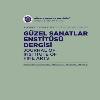Dactylorhiza urvileana’nın in vitro asimbiyotik çimlendirilmesi ve fidelerinin oluşturulması
Bu çalışmada Orchidaceae familyasına ait Dactylorhiza urvillenana (Steud.) H.Baumann & Künkele’nin doku kültürü yöntemleriyle çoğaltılması amaçlandı. Başlangıç eksplantı olarak türe ait olgunlaşmış tohumlar kullanıldı. Sterilizasyonları ve canlılık testleri yapılan tohumların çeşitli temel besi ortamlarındaki çimlenme, protokorm ve kallus oluşum oranları tespit edildi. Çimlenen tohumlardan oluşan protokormlar, Zeatin’in farklı derişimleri ile desteklenen Orchimax aktif kömürlü besi ortamında (OAM) organogeneze teşvik edildi ve sürgün uzama miktarları ve ortalama kök sayıları belirlendi. Elde edilen sonuçlara göre, çimlenme, protokorm ve kallus oluşumunda denenen temel besi ortamlarından Orchimax aktif kömürlü besi ortamının daha etkili olduğu görüldü. Bu ortamdaki çimlenme oranı %62,39, protokorm oluşum oranı %73,18 ve kallus oluşum oranı %8,6 olarak belirlendi. Farklı zeatin derişimlerinin sürgün uzaması ve kök sayısı üzerine etkilerine bakıldığında, 1,0 mg/L derişiminin diğerlerinden daha olumlu sonuçlar verdiği görüldü ve bu ortamdan elde edilen ortalama sürgün boyu ve kök sayısı değerleri sırasıyla 36,05 mm ve 3,4 adet olarak hesaplandı.
Anahtar Kelimeler:
Dactylorhiza urvileana, Doku kültürü, İn vitro, Protokorm, Asimbiyotik çimlenme
In vitro asymbiotic germination and plantlet formation of Dactylorhiza urvilleana
In this study, in vitro production of Dactylorhiza urvilleana (Steud.) H.Baumann & Künkele by using plant cell and tissue culture techniques were carried out. Mature seeds were used as starting explant. After the surface sterilization and viability tests, seeds were germinated in different basal culture media then germination, protocorm and callus formation rates were determined. Protocorms were encouraged to organogenesis in Orchimax medium including activated charcoal (OAM) and supported with different concentrations of Zeatin and shoot length and root numbers of seedlings were detected. It has been determined that the most effective culture medium for germination, protocorm and callus formation rates of seeds is the OAM. In this medium, germination, protocorm and callus formation rates were determined as 62.39%, 73.18%, 8.6%, respectively. It has been determined that the media including 1.0 mg/L Zeatin were effective on the elongation of shoots and root formation. Shoot length and average root number was measured as 36.05 mm and 3.4, respectively.
Keywords:
Dactylorhiza urvileana, Tissue culture, In vitro, Protocorm, Asymbiotic germination,
___
- Arditti J, Michaud JD, Oliva AP (1981) Seed germination of North America Orchids. I. Native California and related species of Calypso, Epipactis, Goodyera, Piperia and Platanthera. Botanical Gazette 142:442453
- Arditti J, Ghani AK (2000) Numerical and physical properties of orchid seeds and their biological implications. New Phytologist 145:367-421
- Bektaş E, Cüce M, Sökmen A (2013) In vitro germination, protocorm formation and plantlet development of Orchis coriophora (Orchidaceae), a naturally growing orchid species in Turkey. Turkish Journal of Botany 37:336-342
- Crafts CB, Miller CO (1974) Detection and identification of cytokinins produced by mycorrhizal fungi. Plant Physiology 54:586-588
- Eymar E, Alegre J, Toribio M, Lo’pez-Vela D (2000) Effect of activated charcoal and 6-benzyladenine on in vitro nitrogen uptake by Lagerstroemia indica. Plant Cell Tissue and Organ Culture 63:57-65
- Hartman HT, Kester DE (1975) Plant Propagation - Principels and Practices. Prentice-Hall. Inc, New Jersey
- Malmgren S (1992) Large-scale asymbiotic propagation of Cypripedium calceolus -plant physiology from a surgeon’s point of view. Bot Gard Micropropagation News 1: 59-63
- Mansuroğlu S, Gürel E (2001) Mikroçoğaltım. In: Babaoğlu M, Gürel E, Özcan S (ed) Bitki Biyoteknolojisi I-Doku Kültürü ve Uygulamaları, Selçuk Üniversitesi Vakfı Yayınları, Konya, pp 262-281
- Mitchell RB (1989) Growing Hardy Orchids from Seeds at Kew. The Plantsman 2:152-169
- Paek KY, Murthy HN (1977) Temperate Oriental Cymbidium species. In: Kull T, Arditti J (ed) Orchid Biology: Reviews and Perspectives, VIII. Edition, Kluwer Academic Publishers, Dordrecht, pp 287
- Raghavan V, Torrey JG (1964) Inorganic nitrogen nutrition of the seedlings of the orchid, Cattleya. American Journal of Botany 51:264-274
- Sezik E (1984) Orkidelerimiz. Sandoz Kültür Yayınları, No:6, pp 166
- Skoog F, Miller CO (1957) Chemical regulation of growth and organ formation in plant tissues cultured in vitro. Symposia of the Society for Experimental Biology 11:118-130
- Stewart SL, Kane ME (2006) Asymbiotic seed germination and in vitro seedling development of Habenaria macroceratitis (Orchidaceae), a rare Florida terrestrial orchid. Plant Cell Tissue and Organ Culture 86:147-158
- Van Waes JM, Debergh PC (1986) In vitro germination of some Western European Orchids. Physiologia Plantarum 67:253-261
- Werbrouck SPO, Debergh PC (1994) Applied aspects of plant regeneration (micropropagation). In: Dixon RA, Gonzales RA (ed) Plant Cell Culture - A Pratical Approach, Oxford University Press, New York, pp 127-135
- Yamazaki J, Kazumitsu M (2006) In vitro asymbiotic germination of immature seed and formation of protocorm by Cephalanthera falcata (Orchidaceae). Annals of Botany 98:1197-1206
- ISSN: 2146-1880
- Yayın Aralığı: Yılda 2 Sayı
- Başlangıç: 2000
- Yayıncı: Artvin Çoruh Üniversitesi Orman Fakültesi
